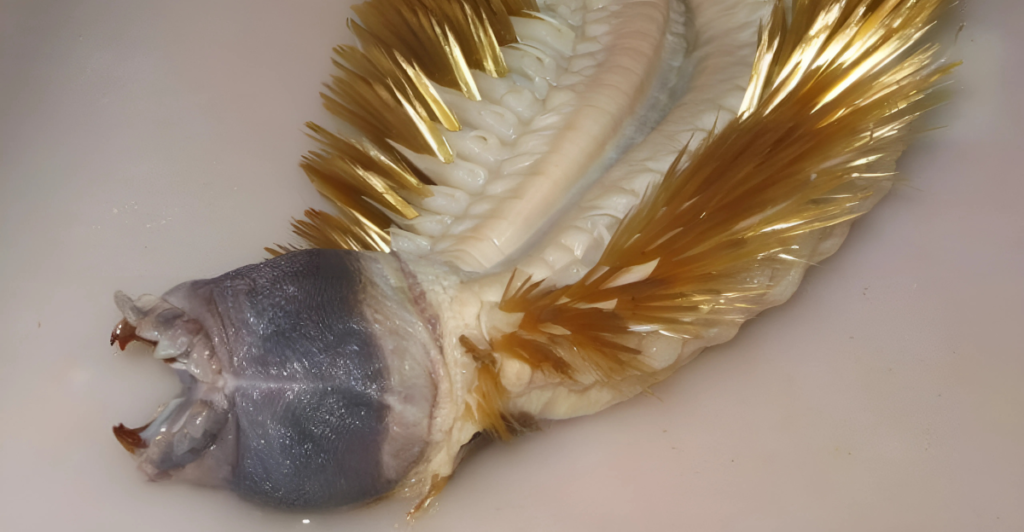
Scientists have uncovered an astonishing new chapter in Earth’s history. Fossils of a newly discovered predatory animal, Timorebestia, have been unearthed in northern Greenland’s Sirius Passet locality. These creatures, which ruled the Early Cambrian seas over 518 million years ago, reveal fascinating insights into the evolution of marine predators.
A New Apex Predator Emerges
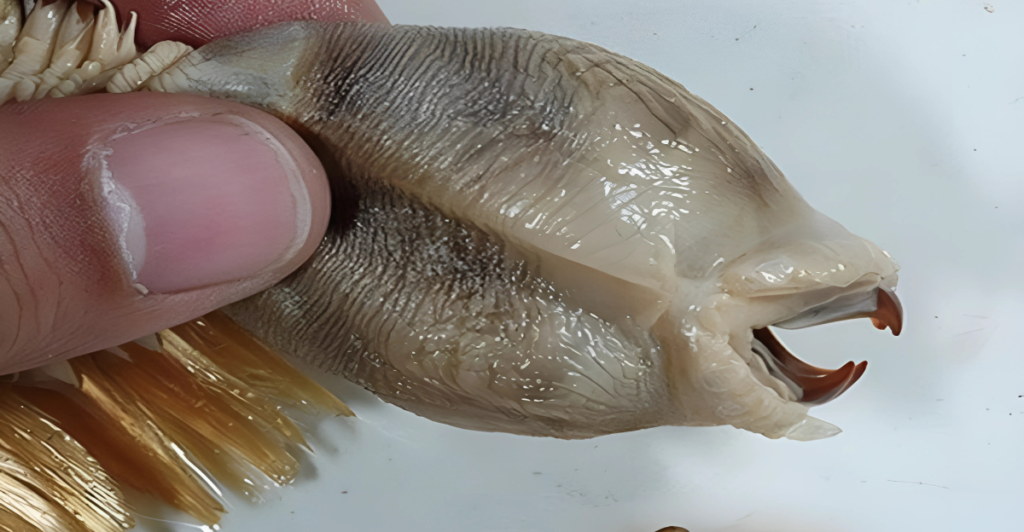
The fossilized creatures, named Timorebestia (Latin for “terror beasts”), were formidable predators of their time. With bodies adorned with fins, elongated antennas, and enormous jaw structures, these worms reached lengths exceeding 30 cm, making them among the largest swimming animals of the Early Cambrian period.
Challenging the Anomalocaridid Reign
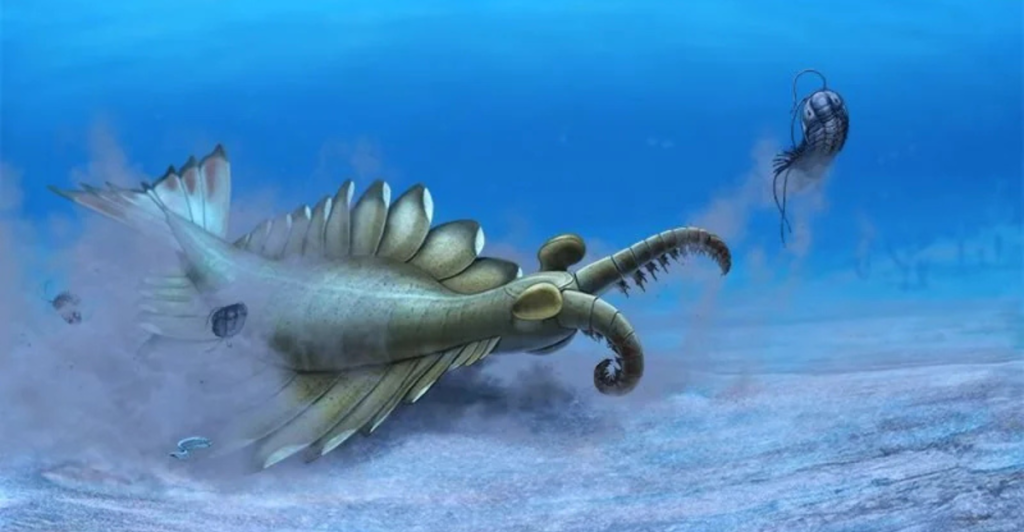
Previously, anomalocaridids, primitive arthropods with bizarre appearances, were considered dominant predators of the Cambrian seas. Jakob Vinther, lead author of the study from the University of Bristol, explains how Timorebestia challenges this long-held view by presenting evidence of a distinct and significant predatory group.
Linking Past to Present
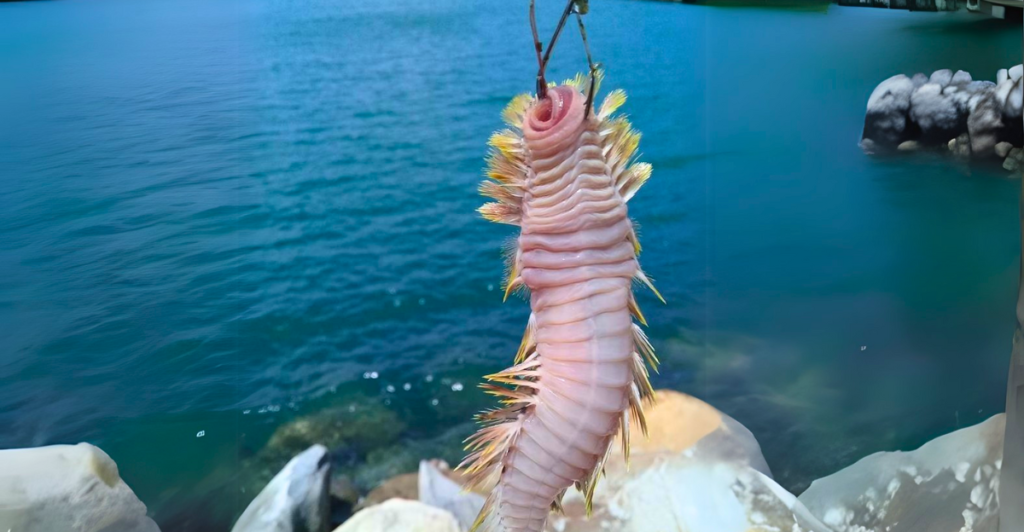
Remarkably, Timorebestia is a distant relative of modern arrow worms, or chaetognaths, which are small, oceanic predators that prey on tiny zooplankton. This connection sheds light on the evolutionary journey of jaw-bearing marine predators, bridging ancient and modern ecosystems.
Complex Oceanic Ecosystems
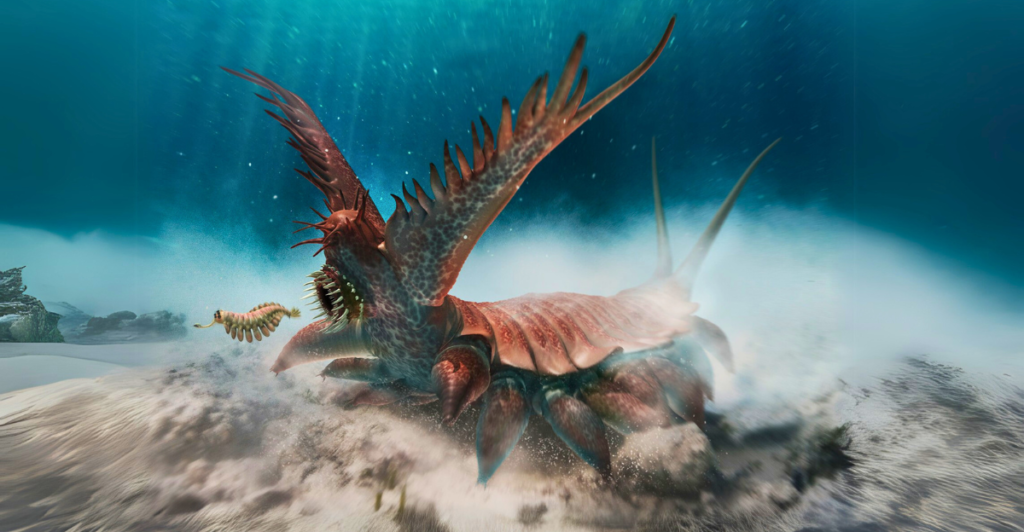
The Cambrian seas were far more intricate than previously imagined. Dr. Vinther noted that the ecosystems supported multiple levels of predators. As giants of their era, Timorebestia were the apex predators, akin to sharks and seals in today’s oceans, dominating the food chain.
Fossilized Diets Reveal Prey
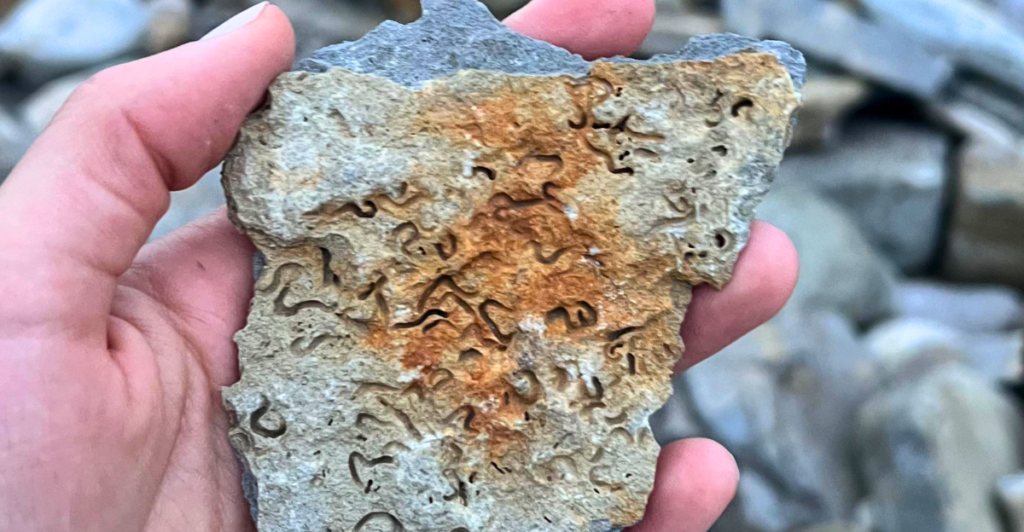
Inside the fossilized digestive tracts of Timorebestia, scientists discovered remains of a swimming arthropod called Isoxys. Despite Isoxys having long, spiny defenses, it was a primary food source for Timorebestia, emphasizing the latter’s dominance and hunting prowess.
Advanced Imaging Techniques

Using electron microprobe mapping, researchers identified detailed anatomical features of Timorebestia, such as fin rays, muscular systems, and even its digestive system. This cutting-edge technology has allowed scientists to reconstruct these ancient predators with remarkable precision.
A 10-Million-Year Reign
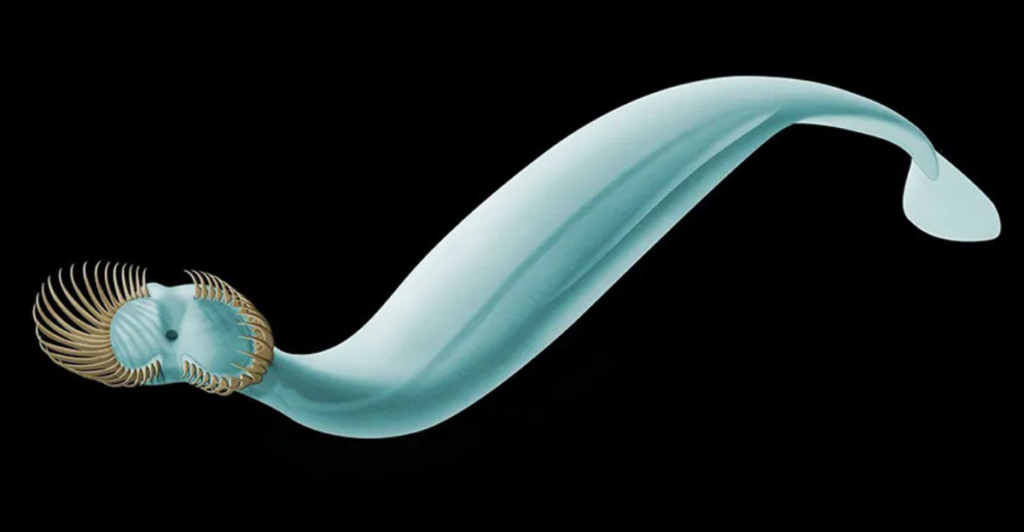
Arrow worms, Timorebestia’s modern relatives, date back over 538 million years. According to Dr. Vinther, these swimming predators likely ruled the oceans for 10 to 15 million years before the rise of arthropods, making them some of the earliest dominant marine hunters.
Connecting Distant Relatives
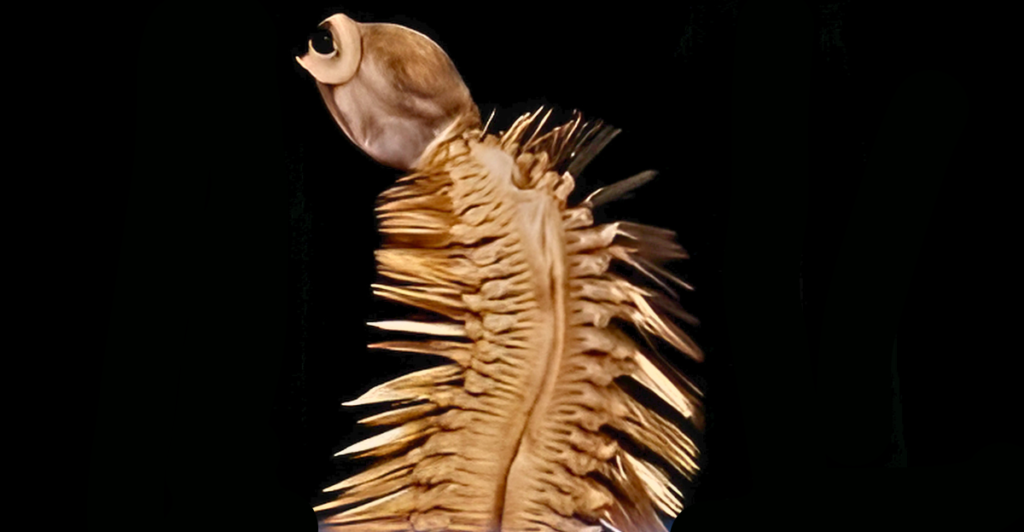
Co-author Luke Parry of the University of Oxford highlighted the evolutionary significance of Timorebestia. Unlike modern arrow worms, which use barbed bristles, Timorebestia had internal jaws—a trait shared with micrognathozoan worms. This discovery provides a vital evolutionary link between these organisms.
The Significance of Sirius Passet
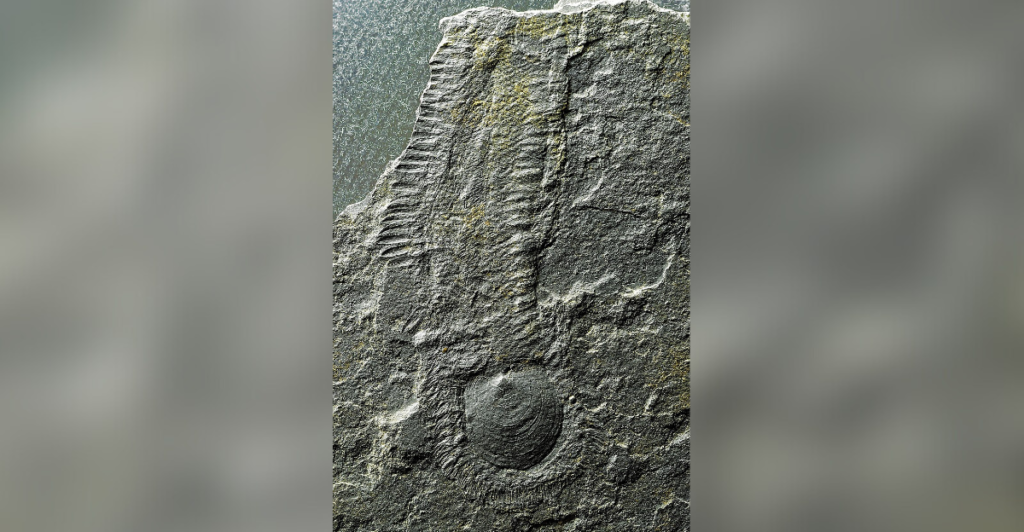
The Sirius Passet locality, a fossil-rich site in northern Greenland, has proven to be a treasure trove for paleontologists. Its exceptional fossil preservation allows scientists to uncover fine details, such as the nervous systems and muscle structures of ancient creatures like Timorebestia.
A Collaborative Effort
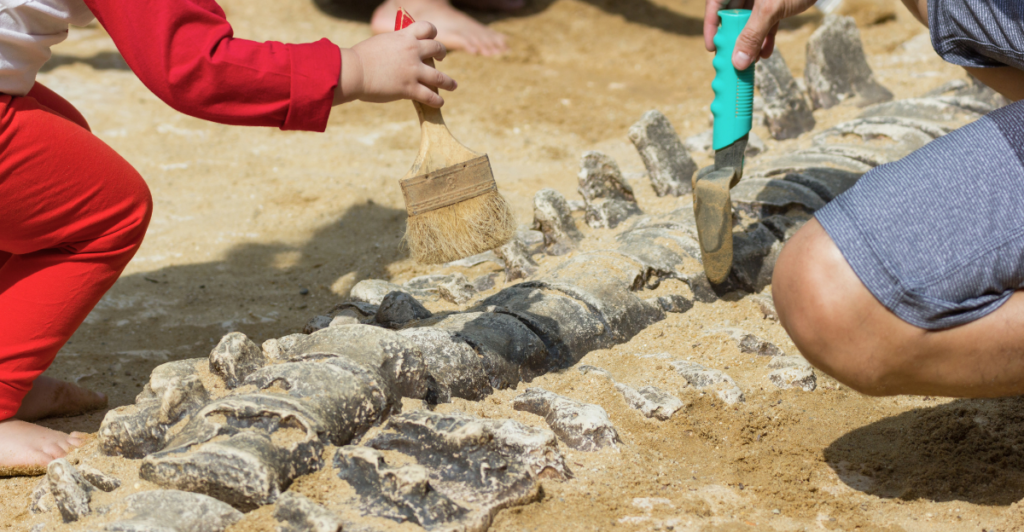
Expeditions to Sirius Passet involved scientists from institutions worldwide. Tae Yoon Park of the Korean Polar Research Institute emphasized the collaborative nature of this groundbreaking work and the shared excitement over the diversity of fossil discoveries in this remote Arctic region.
Unveiling Ancient Ecosystems

The research on Timorebestia offers a glimpse into the complexity of early marine ecosystems. These fossils not only reveal the anatomy of ancient predators but also paint a vivid picture of the food webs and ecological dynamics that defined the Cambrian seas.
The Journey Ahead
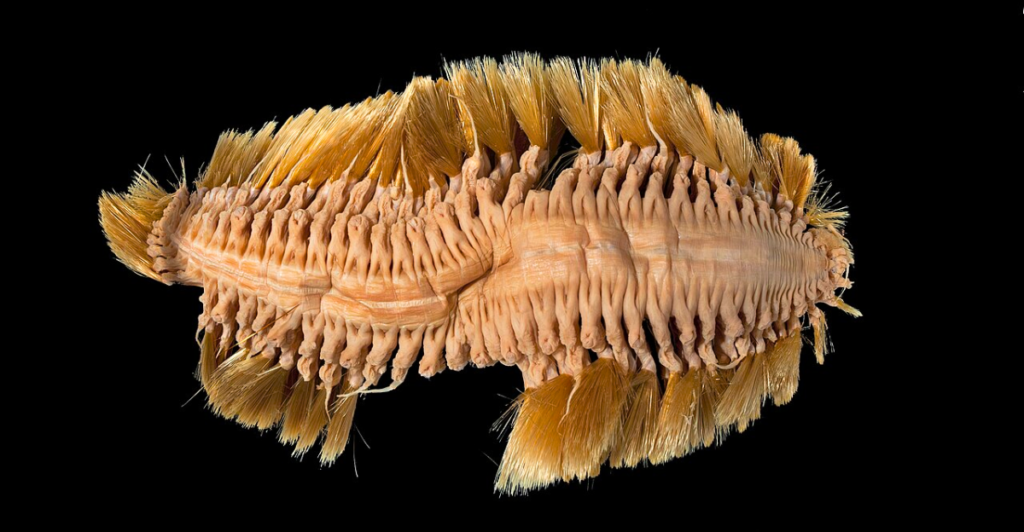
The discovery of Timorebestia marks the beginning of a deeper exploration into Earth’s ancient oceans. With many more fossils awaiting study, researchers are eager to continue unraveling the mysteries of early animal life and the evolutionary paths that shaped marine ecosystems as we know them today.
Discover more of our trending stories and follow us to keep them appearing in your feed

Meet the Massive Crocodiles That Make Their Homes 40 Feet Underground
Deepest Hole On Earth Permanently Sealed After 2 Billion Year Old Discovery
13 Rare Marine Fossils Discovered Far Inland in the U.S.
12 Fossils That Have Held Up Spookily Well
Stay connected with us for more stories like this! Follow us to get the latest updates or hit the Follow button at the top of this article, and let us know what you think by leaving your feedback below. We’d love to hear from you!







